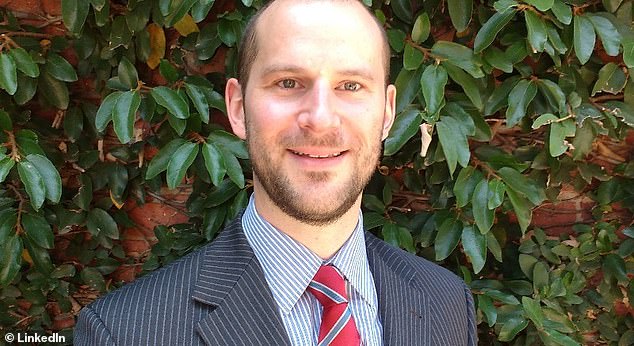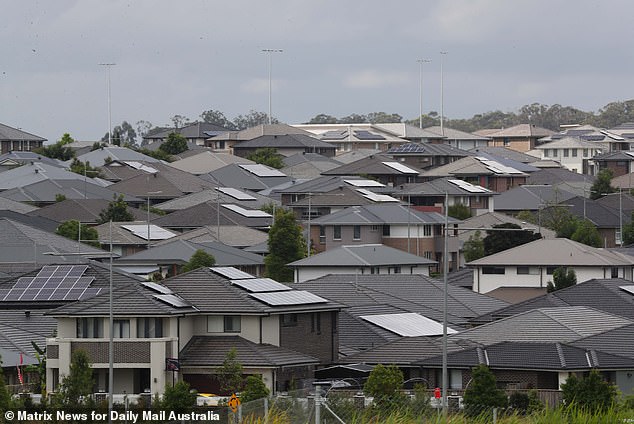A former Treasury economist has called Australia’s apparent wealth false because it is built on unaffordable housing.
Leith van Onselen, now chief economist at MacroBusiness, noted that Australia’s $11 trillion property assets were worth four times its gross domestic product.
“The vast majority of Australian household wealth is not genuine because it is tied up in overpriced housing and not readily available for consumption,” he said in a YouTube video.
Is a country truly rich if its youngest residents cannot afford to live independently without financial help from their parents?
Mr van Onselen also questioned why bodies such as Swiss bank UBS rank Australia second behind Luxembourg in its Global Wealth Report based on its measure of average wealth per capita.
“I’m always baffled when I see a global wealth table that says Australian households are among the richest in the world, blah, blah, blah,” he said.
“The reality is that most of this wealth is fake. It has increased because the value of our homes has skyrocketed.
A former Treasury economist has described Australia’s wealth as fake because it is built on unaffordable housing (pictured are houses in Oran Park, south-west Sydney).

Australia’s capital cities now have a median house price of close to $1 million
“This fake wealth is stealing the future from our children and grandchildren.”
House prices rose during the pandemic in 2021 after the Reserve Bank cut interest rates to a record low of 0.1 per cent.
House prices have still soared by double digits over the past year in Brisbane, Adelaide and Perth despite the Reserve Bank raising interest rates 13 times in 2022 and 2023 to a 12-year high of 4.35 per cent.
This was due to increasing demand caused by record levels of immigration.
Last year, net outbound migration hit record levels, approaching 550,000, mostly to Sydney and Melbourne, which in turn pushed would-be buyers towards more affordable cities.
Mr van Onselen noted that Australia’s national debt-to-income ratio had doubled from 3 in 1996 to 6.2 now, taking into account everyone with a mortgage.
A person with an average income of $100,017 buying a typical Australian home would not be able to afford a home worth an average of $802,357.
This is because this individual buyer would have a debt-to-income ratio of 8, which is beyond the current bank lending threshold of 5.2 based on the RBA’s current cash rate.
The situation is even more serious in capital cities, where the average house price is now $997,352.
Mr van Onselen said Australia would be a better society if houses in the country’s big cities cost an average of $465,000.

Leith van Onselen, now chief economist at MacroBusiness, noted that Australia’s $11 trillion in property assets were worth four times its gross domestic product.
Baby boomers in the 1980s could buy a home in Sydney for just four times their salary – a ratio now only available in low-demand regional centres.
“The appreciation of Australian house prices has come at the direct expense of our children, grandchildren and future generations who, when their turn comes to enter the market, will be forced to pay far more than they should for housing, making them poorer,” he said.
‘Australia would be a much more equal society if younger Australian prospective home buyers were not subject to a life of debt bondage or trapped in the rental market.’
Mr van Onselen noted that Australia’s productivity levels rose by just 0.5 per cent over the past financial year as so much money is spent on paying off mortgages that little is left for consumer spending, let alone business investment.
Current productivity growth is significantly below the 2.1 percent level recorded between the 1990s and the mid-2000s.
“Australians are carrying a bigger debt burden than the world,” he said.
‘Australia’s productivity is suffering because an increasing proportion of our economic output is going into non-productive housing rather than the real economy.
‘Australia’s economy would also be more productive if our financial resources were channelled into the real economy rather than the Ponzi economy.’
Mr van Onselen pointed to the cynicism behind schemes that supposedly aim to make housing more affordable, such as first-home buyer grants and stamp duty concessions, as they only attract even more buyers to the market and push prices ever higher.
Most MPs are property owners and personally benefit from rising prices, and Mr van Onselen said even those not motivated by personal gain are afraid to introduce any measures that might reduce prices for fear of losing votes.
“Too many politicians have their noses in the trough and know that falling house prices are electoral poison,” he said.

